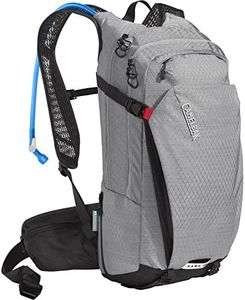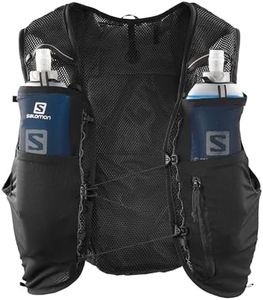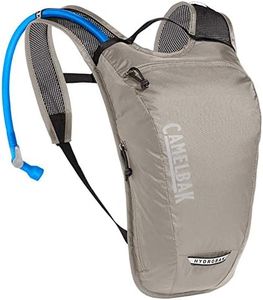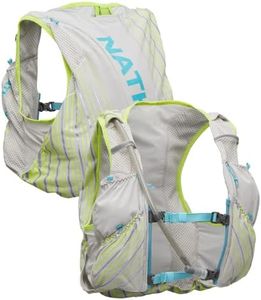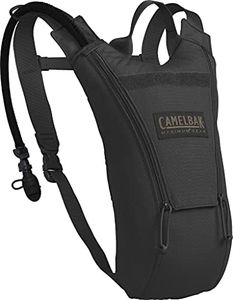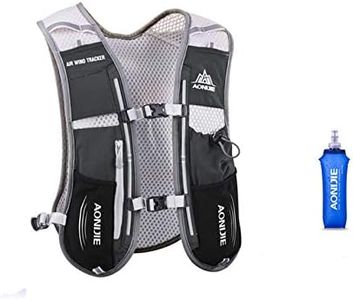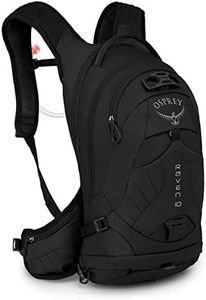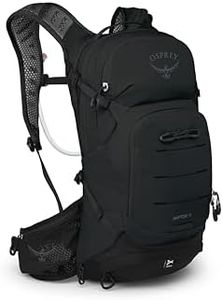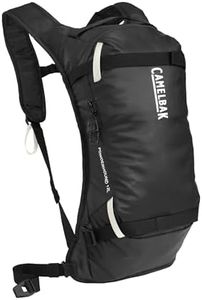We Use CookiesWe use cookies to enhance the security, performance,
functionality and for analytical and promotional activities. By continuing to browse this site you
are agreeing to our privacy policy
10 Best Hydration Pack
From leading brands and best sellers available on the web.Buying Guide for the Best Hydration Pack
Choosing the right hydration pack ensures you stay comfortable and properly hydrated during your activities, whether you're hiking, cycling, running, or exploring outdoors. It's important to think about how long you'll be active, the environment you'll be in, and what you'll need to carry besides water. A good hydration pack should fit well, match your activity, and be convenient to use. Understanding the main features will help you narrow down your choices and find a pack that truly meets your needs.Reservoir CapacityReservoir capacity refers to how much water the hydration bladder inside the pack can hold, usually measured in liters. This is crucial because it directly impacts how long you can go without refilling water. Small capacities (1–1.5 liters) are suitable for short outings or runs where weight is critical. Medium capacities (2–2.5 liters) work well for most day trips and hikes, providing a good balance of weight and water supply. Large capacities (3 liters or more) are best if you're heading out for a longer adventure or won't have many opportunities to refill. Choose a reservoir size based on how long you plan to be active and how much water you generally drink—more intense activities or hotter weather require more water.
Pack CapacityPack capacity means the overall storage volume of the backpack, typically measured in liters. It's important because it determines how much additional gear, food, and clothing you can carry along with your water. Minimalist packs (under 5 liters) are lightweight and ideal if you only need essentials. Medium sizes (5–15 liters) let you take along snacks, a light jacket, and a few extras—great for half-day outings. Larger packs (15 liters or more) suit longer hikes, all-day rides, or situations where you'll carry more supplies. Base your choice on what you typically bring and how flexible you need your pack to be.
Fit and ComfortFit and comfort describe how well the hydration pack sits on your body and how comfortable it feels during movement. This is important because an ill-fitting pack can cause chafing, pressure points, or distract you from your activity. Packs come in different sizes and sometimes different designs for men, women, and youth. Features like adjustable straps, padding, and ventilation increase comfort and stability. Pay attention to the fit, try the pack if possible, and choose one tailored to your torso length and activity type to ensure it stays snug and comfortable, especially for longer use.
Hydration System DesignThe hydration system design refers to features like the shape and type of the water reservoir, the bite valve or drinking tube, and how easily you can refill and clean the system. A good design makes it effortless to drink while on the move without removing the pack. Look for leak-proof valves and easy-to-access tubes. Consider how easily you can clean the reservoir, as some have wide openings or come apart for better cleaning. If you want hassle-free hydration and low maintenance, prioritize a simple, reliable system that matches your usage scenario.
Weight and DurabilityThe weight and durability of a hydration pack matter because they influence how heavy your load feels and how well the pack holds up over time. Lightweight packs are essential for running or fast-paced activities but might sacrifice durability. Heavier-duty packs may be better suited for rugged use or carrying heavier loads, as they're made from tougher materials and extra reinforcement. Think about the conditions you’ll face: go lighter if speed counts, choose tougher if you need more security against wear and tear, or if you'll be carrying more gear.
Extra FeaturesExtra features include things like pockets for snacks or keys, attachment points for helmets or trekking poles, reflective bits for visibility, and rain covers. While not strictly necessary, these can add convenience and safety depending on your activity. Decide which add-ons will genuinely make your outings easier or safer—such as quick-access pockets for gels on a long run or reflective materials for cycling at dusk. Let your planned activities and what you want close at hand guide which features matter most to you.
